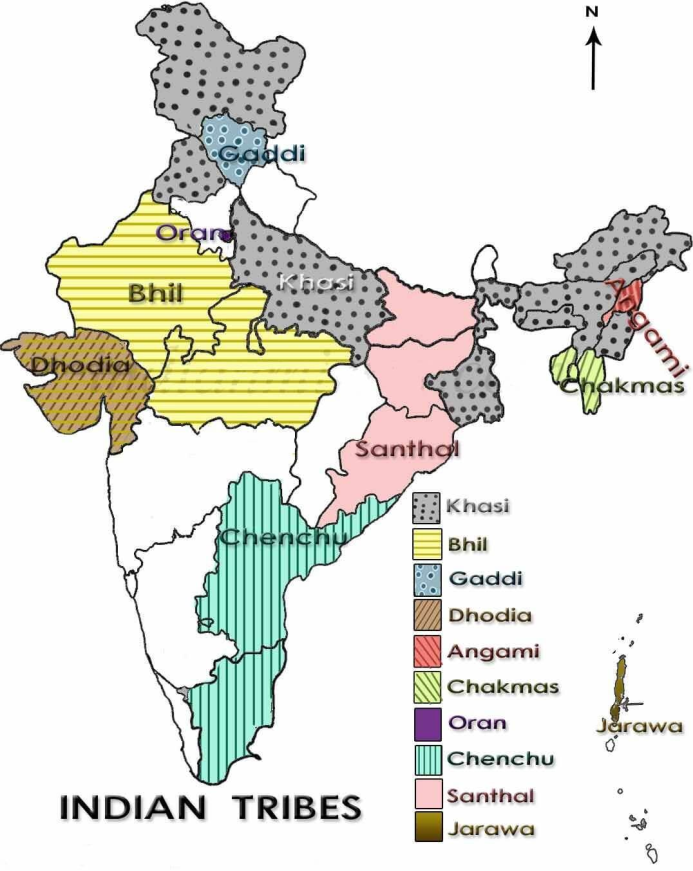Description

Copyright infringement is not intended
Context: Ministry of Tribal Affairs reconstructed the schemes for comprehensive development of Tribal’s.
Details
- The Ministry of Tribal Affairs is implementing the various schemes where the funds are released to the State Government based on the proposals received from the State Government.
Schemes for the development of Tribals
- The Pre and Post Matric schemes are demand based schemes and every ST student whose family income is upto Rs 2.5 lakhs is entitled to scholarship for pursuing education from class IX to Post Doctorate across India.
- The states send the proposal for the estimated expenditure during the financial year based on the expenditure incurred in previous years and advance upto 50% of Central share is released to the States.
- After the State has disbursed the scholarship to the students and has submitted certificates, the balance amount is released to the State provided the State has contributed its share.
- Pradhan Mantri Adi Adarsh Gram Yojna:
- Comprehensive development of 36,428 villages will be undertaken to develop these villages as Adarsh Gram, under ‘Pradhan Mantri Aadi Adarsh Gram Yojana’.
- These villages have a tribal population of more than 500 and 50% tribal.
- Pradhan Mantri Janjatiya Vikas Mission
- The Mission seeks to achieve livelihood driven tribal development in the next five years through formation of Van Dhan groups who have been organized into Vandhan Kendras.
- New haats bazaar and ware houses will be developed in next 5 years as part of “Atmanirbhar Bharat Abhyan”.
- TRIFED would be the nodal agency for implementing the scheme. The products produced will be marketed through Tribe India Stores.
- Venture Capital Fund for STs
- An amount of Rs. 50 cr. has been sanctioned for the new scheme of ‘Venture Capital Fund for Scheduled Tribes’ (VCF-ST), which is aimed at promoting Entrepreneurship among the STs.
- The VCF-ST scheme would be a social sector initiative to promote ST entrepreneurship and to support and incubate the start-up ideas by ST youth.
- Central Sector Scholarship Scheme for ST students introduced from the academic year 2007-08 with the objective of encouraging meritorious ST students for pursuing studies at Degree and Postgraduate level in any of the Institutes identified by the Ministry of Tribal Affairs for the purpose.
-
Vocational Training Centers in Tribal Areas
- The main aim of this scheme is to upgrade the skills of the tribal youth in various traditional/ modern vocations depending upon their educational qualification, present economic trends and the market potential, which would enable them to gain suitable employment or enable them to become self-employed.
About Tribals in India
- The Term “Tribal” is used for the Communities that are very old, being among the oldest inhabitants of the Sub-Continent.
- They did not Practice a religion with a written text, did not have Sharp Caste/Class divisions
- In terms of language, tribes are Categorized into 4 Categories:
- Indo-Aryan
- Dravidian
- Austric
- Tibeto-Burman
- In terms of Size, the biggest tribes are Gonds, Bhils, Santhals, Oraons, Minas, Bodos and Mundas.
- Total Population of tribes amounts to about 8.2% of the Population of India.
- On the basis of livelihood, tribes Can be Categorized into Fishermen, food gatherers and hunters, Shifting Cultivators, Peasants and Plantation and industrial workers.
- Tribal Society is more egalitarian and kinship based modes of Social organization.
- Tribals were not always the oppressed groups as they are now; there were Several Gond kingdoms in Central India.
- Many of the So-Called Rajput kingdoms of Central and western India actually emerged through a Process of Stratification among Adivasi Communities themselves.
- Adivasis often exercised dominance over the Plains People through their Capacity to raid them, and through their Services as local militias.
- They also occupied a Special trade niche, trading forest Produce, Salt and elephants.
- Capitalist economics to exploit forest resources and minerals to recruit cheap labor has brought tribal Societies in Contact with mainstream Society a long time ago.
- They were losing their land to non-tribal immigrant Settlers, and their access to forests because of the government Policy of reservation of forests and the introduction of mining operations.
Challenges faced by Tribals
- Land, Forest were taken away from Tribal Societies in the name of development.
- Development involved the building of large dams, factories and mines. Because the tribal areas were located in mineral rich and forest Covered Parts of the Country, tribals have paid a huge Price for the development of the rest of Indian Society. This kind of development has benefited the mainstream at the expense of the tribes.
- Forests Started to be systematically exploited in British times and the trend Continued after Independence. The Coming of Private Property in land has also adversely affected tribals, whose Community-based forms of Collective ownership were placed at a disadvantage in the new System.
- Many tribal Concentration regions and States have been experiencing the Problem of heavy in-migration of non-tribals. This threatens tribal Communities and Cultures, besides accelerating the Process of exploitation of tribals.
- In Tripura, the tribal Share of its Population halved within a Single decade, reducing them to a minority. Similar Pressure is being felt by Arunachal Pradesh.
- Many Tribals in the North-East States have been living for decades under Special laws that limit the Civil liberties of Citizens, States have been declared as ‘disturbed areas’.
- The vicious Circle of armed rebellions Provoking State repression which in turn fuels further rebellions has damaged the economy, Culture and Society of North-eastern State.
https://www.pib.gov.in/PressReleasePage.aspx?PRID=1807760












